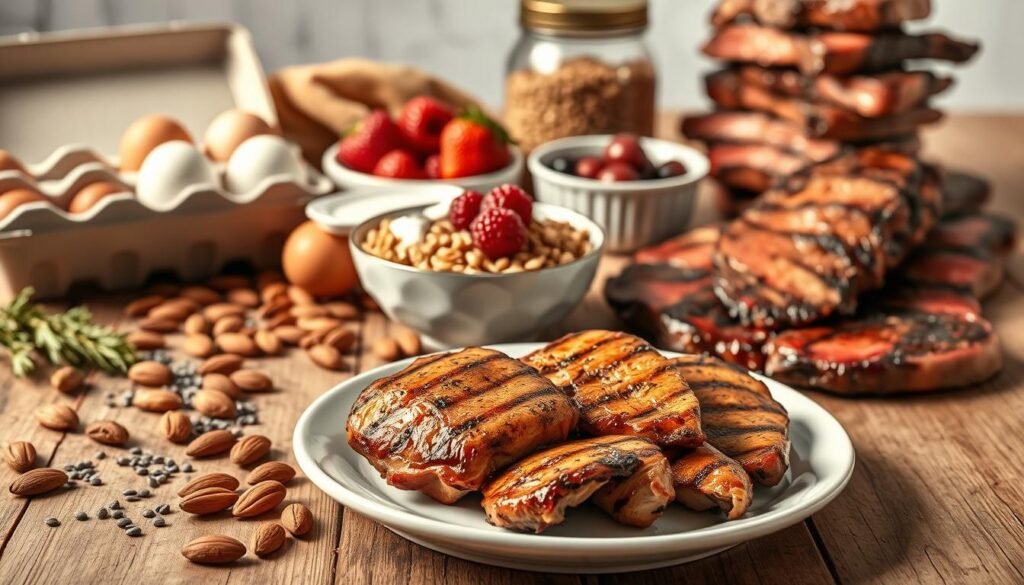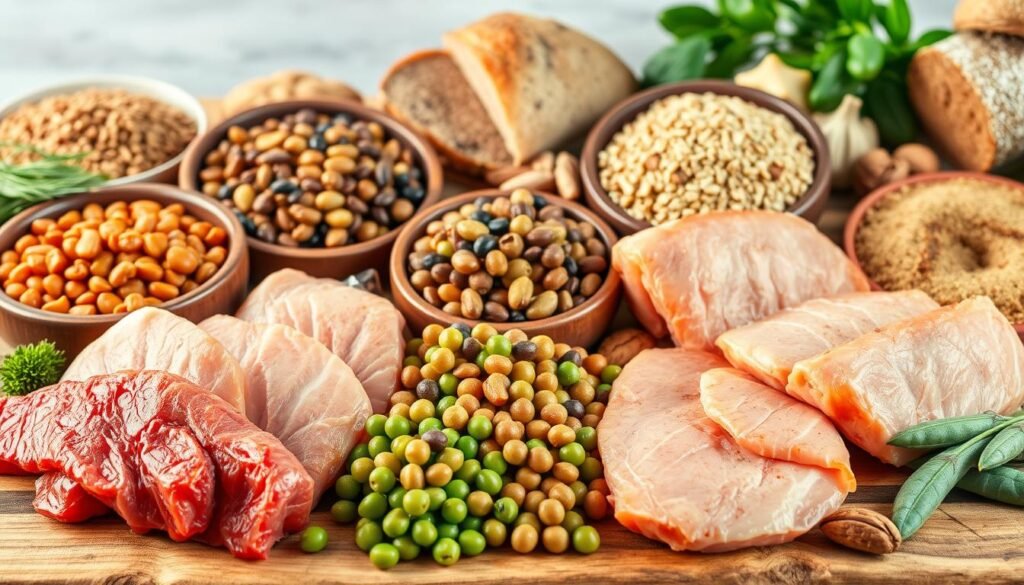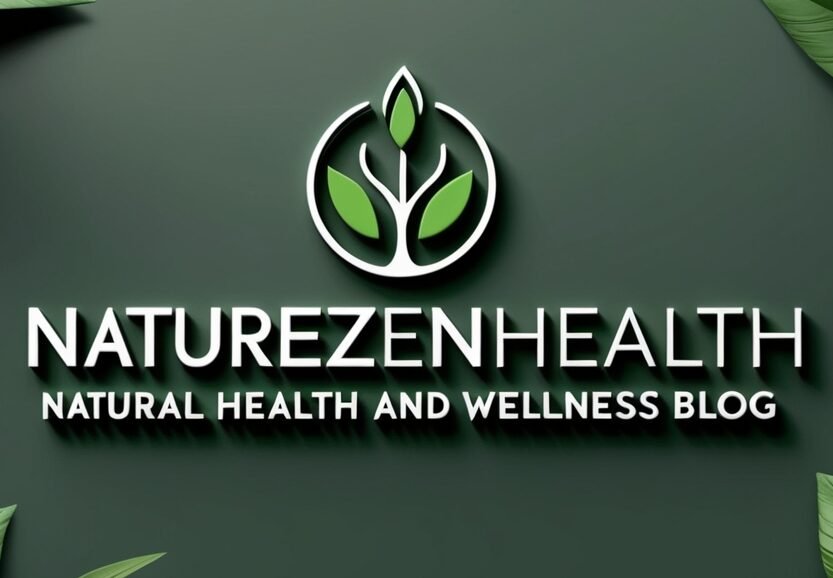Are you getting enough protein in your diet? As we move into 2025, it’s more important than ever to know how high-protein foods keep us healthy.
A protein-rich diet is key for good health. It helps with muscle strength, weight control, and even sharpens your mind. But what foods are high in protein, and how do you make sure you’re eating the right ones?
This article will explore why you need high-protein foods in your meals. We’ll look at the key sources and their health benefits.
Key Takeaways
- Understanding the importance of a protein-rich diet for optimal health.
- Identifying the best high-protein foods to include in your diet.
- Learning how a protein diet supports overall well-being.
- Discovering the health benefits associated with high-protein intake.
- Exploring practical tips for incorporating more protein into your meals.
Understanding Protein and Its Importance
Protein is a key nutrient that helps with muscle repair and overall health. It’s a must-have in our diet for staying healthy.
To understand protein’s importance, we need to know what it is. Proteins are complex molecules made up of amino acids, which are life’s building blocks. They are vital for many bodily functions, like building and repairing tissues, and making enzymes and hormones.
What is Protein?
Protein is made of 20 different amino acids, some of which our bodies can’t make. These are called essential amino acids, and we get them from food. You can find proteins in many foods, from animals and plants.
The quality of protein depends on its amino acid mix. High-quality proteins have all the essential amino acids in the right amounts. Foods like eggs, dairy, and lean meats are good examples.
Why You Need Protein in Your Diet
Protein is key for many body functions, like fixing muscles and making enzymes and hormones. It’s especially important for those who are active or want to build muscle.
| Benefit | Description |
|---|---|
| Muscle Repair and Growth | Protein gives the amino acids needed for muscle repair and growth. It’s vital for athletes and those who are active. |
| Enzyme and Hormone Production | Proteins help make enzymes and hormones, which are crucial for metabolism and growth. |
| Overall Health | Enough protein supports overall health by keeping skin, hair, and nails healthy, among other benefits. |
Eating enough protein can be done by choosing a variety of protein-rich foods.
Knowing how important protein is and its role in our diet helps us make better food choices. By choosing high-quality protein sources, we support our health and well-being.
Top High-Protein Foods to Incorporate
Eating a diet rich in protein is easy with the right foods. Protein helps build and repair muscles and keeps us healthy. Mixing different protein sources in your meals ensures you get all the amino acids your body needs.
Lean Meats
Lean meats are great for protein and are low in fat. Chicken breast is a favorite, with about 31 grams of protein per 3-ounce serving. Turkey breast is another lean choice, offering similar protein. Lean beef, like sirloin or tenderloin, is also high in protein and good for a healthy diet.
Dairy Products
Dairy is not just for calcium; it’s also a protein powerhouse. Milk has about 8 grams of protein per cup. Greek yogurt can have up to 20 grams of protein per 6-ounce serving. Cheese, especially cottage cheese and ricotta, are also high in protein and can be added to meals or snacks.
Plant-Based Proteins
Plant-based diets have many high-protein options. Legumes like lentils, chickpeas, and black beans are great protein sources. Nuts and seeds, including almonds, chia seeds, and hemp seeds, are also packed with protein. Plus, plant-based protein powders from pea, rice, and hemp are easy to use to boost your protein.
Animal vs. Plant Protein: What’s Better?
Choosing between animal and plant protein is more than a simple preference. It also involves looking at nutrition and the environment. Knowing the differences helps you make better choices about your protein.
Nutritional Differences
Animal proteins, like those in meat, dairy, and eggs, are complete. They have all nine essential amino acids our bodies need. Plant proteins, however, are often missing one or more of these amino acids. But, eating a variety of plants can help get all the amino acids.
Nutritional highlights of animal protein include:
- High-quality protein with all essential amino acids
- Rich in vitamins and minerals like vitamin B12 and iron
Plant protein benefits include:
- High in fiber and antioxidants
- Lower saturated fat content compared to some animal products
Digestibility and Absorption
Animal proteins are easier for our bodies to digest and absorb. This is because they have all the amino acids and no fiber. Plant proteins, though sometimes harder to digest, still offer great nutrition when eaten in different combinations.
Environmental Impact
The way we produce protein affects the environment. Animal farming leads to a lot of greenhouse gas emissions, deforestation, and water pollution. On the other hand, plant-based proteins need less land, water, and energy to make.
Key environmental considerations:
- Animal agriculture contributes to around 14.5% of global greenhouse gas emissions.
- Plant-based diets can reduce an individual’s carbon footprint by up to 50%.
In conclusion, both animal and plant proteins have their good and bad sides. A balanced diet that looks at nutrition, health, and the environment helps you choose wisely. This way, you can enjoy the benefits of a protein-rich diet.
The Best Protein Sources for Muscle Building
Protein is key for building muscle. Some foods are better than others for this purpose. The quality and amount of protein you eat matter a lot.
Chicken and Turkey
Chicken and turkey are great for building muscle. They have lots of protein and not much fat. This lean protein helps muscles grow without extra calories.
Fish and Seafood
Fish and seafood are full of protein and omega-3 fatty acids. These are good for muscle recovery and health. Salmon, tuna, and shrimp are especially good choices.
Eggs
Eggs are a top choice for muscle building. They have all the amino acids needed for muscle repair and growth. Eggs are also easy for the body to use.

| Food Item | Protein Content per Serving | Serving Size |
|---|---|---|
| Chicken Breast | 31g | 3 oz |
| Turkey Breast | 30g | 3 oz |
| Salmon | 20g | 3 oz |
| Large Eggs | 6g | 1 egg |
Eating these protein-packed foods can really help with muscle building. Whether you’re experienced or new, knowing their benefits can guide your diet.
How to Design a High-Protein Meal Plan
Adding high-protein foods to your diet is easy and tasty. To make a high-protein meal plan, pick a variety of protein-rich foods. Spread them out over your meals. This helps your muscles and boosts your health.
Breakfast Options
Begin your day with a protein-packed breakfast. It gives you energy and helps repair muscles. Try scrambled eggs with spinach, Greek yogurt with nuts, or a banana and almond milk smoothie.
Lunch Ideas
At lunch, choose foods high in protein like grilled chicken breast, tuna salad, or lentil soup. Add complex carbs and veggies for a full meal.
Dinner Inspirations
Dinner can feature grilled salmon, turkey breast, or tofu stir-fry with veggies. These dishes offer protein and important vitamins and minerals.
Snacks for Protein Boost
Snack on high-protein foods like cottage cheese, hard-boiled eggs, or protein bars. They keep your protein levels up all day.
Benefits of a High-Protein Diet
Eating high-protein foods can greatly improve your health. It helps with weight management and boosts your metabolism. High-protein diets are not just for muscle growth. They are key to overall health and wellbeing.
Weight Management
A high-protein diet is great for managing weight. Protein takes more energy to digest than carbs or fats. This can speed up your metabolism and help you lose weight. Plus, protein-rich foods make you feel fuller, so you’re less likely to overeat.
Key Benefits for Weight Management:
- Increased satiety
- Higher metabolic rate
- Preservation of lean muscle mass during weight loss
Muscle Repair and Growth
Protein is vital for muscle repair and growth. It gives your body the building blocks to fix and build muscle. This is especially important for athletes or those who are active.
The role of protein in muscle repair involves:
- Providing essential amino acids
- Supporting muscle protein synthesis
- Aiding in recovery after exercise
Improved Metabolism
A high-protein diet can also boost your metabolism. Protein’s thermic effect is higher than carbs and fats. This means your body uses more energy to process protein. This can make your metabolism more efficient.
| Nutrient | Thermic Effect |
|---|---|
| Protein | 15-30% |
| Carbohydrates | 5-10% |
| Fats | 0-5% |
In conclusion, a high-protein diet has many benefits. It helps with weight management, muscle repair, and boosts metabolism. Understanding protein’s role in your diet can lead to better health choices.
Protein and Athletic Performance
Protein is key for better athletic performance and recovery after workouts. Athletes need to know how much protein to eat to perform at their best and fix muscles.
Pre-Workout Nutrition
Eating the right amount of protein before working out can boost your performance. Aim for a mix of carbohydrates and protein to give you energy and help your muscles work well. Good choices include bananas with peanut butter or a protein shake with fruit.
Post-Workout Recovery
Protein is vital for muscle recovery after a workout. Eat protein within 30-60 minutes after exercising to fix and build muscle. Good options are protein shakes, Greek yogurt, or a turkey sandwich.
| Food Item | Protein Content (per serving) | Serving Size |
|---|---|---|
| Chicken Breast | 31g | 3 oz |
| Greek Yogurt | 20g | 1 cup |
| Salmon | 20g | 3 oz |
| Eggs | 6g | 1 large egg |
Recommended Protein Intake for Athletes
The amount of protein athletes need varies. It depends on the sport, how hard they play, and their goals. Generally, athletes should eat 1.2 to 2.2 grams of protein per kilogram of body weight every day. For example, a 150-pound (68 kg) athlete should aim for 82 to 150 grams of protein daily.
Common Myths About Protein
The world of protein is full of myths and misconceptions. These can confuse even the healthiest people. As we look into protein-rich foods and the benefits of a protein-rich diet, it’s key to know what’s true.
Let’s explore some common myths about protein.
Too Much Protein is Harmful
Many think too much protein is bad for you. It’s true that too much can strain your kidneys. But, moderate consumption is safe for most.
A study in the Journal of the International Society of Sports Nutrition found that
“protein intakes up to 2.3 grams per kilogram of body weight per day are safe for healthy individuals”
. Still, it’s smart to talk to a doctor to find out what’s right for you.
Protein is Only for Bodybuilders
Some think protein is only for bodybuilders or athletes. But, protein is essential for everyone. It helps with muscle repair, maintenance, and health.
- Supports muscle health
- Aids in weight management
- Helps in satiety and appetite control
Eating protein-rich foods has many health benefits. It’s important for people of all ages and fitness levels.
You Can’t Get Protein from Plants
Many believe plant-based diets lack protein. But, this is not true. There are many plant-based protein sources, like:
- Legumes (lentils, chickpeas, black beans)
- Nuts and seeds (almonds, chia seeds, hemp seeds)
- Whole grains (quinoa, farro, bulgur)
- Soy products (tofu, tempeh, edamame)

By eating a variety of these foods, you can get enough protein. A well-planned plant-based diet is not only protein-rich but also offers other health benefits.
Knowing the facts about protein helps us make better diet choices. By clearing up these myths, we can see the real benefits of a protein-rich diet and how it supports a healthier lifestyle.
Tips for Increasing Protein Intake
Increasing your protein intake is easy with a bit of planning. Adding the right foods to your diet and making small changes can make a big difference.
Smart Grocery Shopping
Shopping smart is a great way to boost your protein. Look for protein-packed foods like lean meats, fish, eggs, dairy, and plant-based options like beans and lentils.
Here’s a list of high-protein foods to pick up:
- Lean meats: chicken breast, turkey, lean beef
- Fish and seafood: salmon, tuna, shrimp
- Dairy: Greek yogurt, cottage cheese, milk
- Legumes: black beans, chickpeas, lentils
- Nuts and seeds: almonds, chia seeds, hemp seeds
Easy Protein-Boosting Recipes
Adding protein to your meals is simple and tasty. Try adding protein-rich foods to your favorite dishes or try new recipes.
Here are some ideas to start:
| Meal | Protein Source | Example Recipe |
|---|---|---|
| Breakfast | Eggs | Scrambled eggs with spinach and feta |
| Lunch | Chicken breast | Grilled chicken salad with mixed greens and avocado |
| Dinner | Salmon | Baked salmon with quinoa and steamed vegetables |
Meal Prep Ideas
Meal prep helps ensure you get enough protein all day. It saves time and helps you make healthier choices.
Here are some meal prep ideas:
- Make overnight oats with Greek yogurt and nuts for a quick breakfast.
- Grill a lot of chicken breast for salads or wraps all week.
- Cook a big batch of lentil soup for easy lunches.
Conclusion: Embracing a Protein-Rich Diet
Adding high-protein foods to your diet can greatly improve your health. By eating a variety of protein sources, you can see many benefits. These include better weight management and improved athletic performance.
Sustainable Eating Choices
It’s important to make sustainable choices when eating more protein. Look for protein sources that are good for you and the planet. Opt for lean meats, plant-based proteins, and eco-friendly fish.
Long-Term Health Outcomes
A high-protein diet offers many long-term health benefits. It can help build muscle, strengthen bones, and lower the risk of chronic diseases. By focusing on protein, you can live a healthier, more balanced life.



